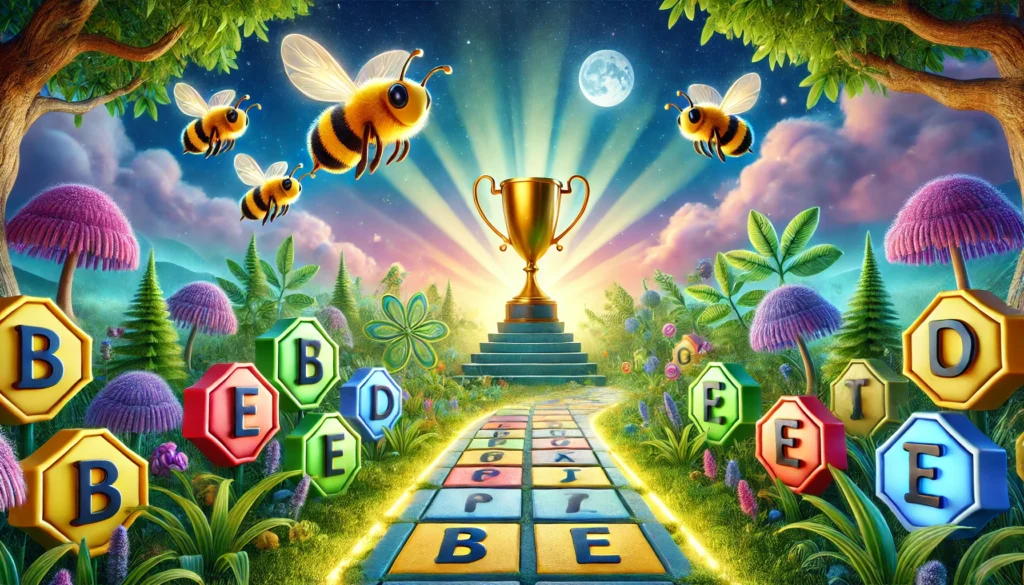
The New York Times has long been a pioneer in engaging its readers with thought-provoking content. Among its most popular offerings is the Spelling Bee, a daily word game that tests your vocabulary, creativity, and patience. The spelingbee nyt nov 14 puzzle was no exception, challenging enthusiasts with unique word combinations and a satisfying pangram to discover. Let’s explore how this puzzle combines elements like etymology, definitions, and gameplay to create an unforgettable experience.
Table of Contents
What is the NYT Spelling Bee?
The Spelling Bee is a word game where players use a set of seven unique letters arranged in a honeycomb to form as many valid words as possible. Each word must:
- Be at least four letters long.
- Use the center letter.
- Avoid proper nouns and abbreviations.
Etymology and Word Origins in Spelling Bee
Understanding the roots of words can give you an edge in the Spelling Bee. For example, knowing that “mentha” relates to mint or that “antler” stems from Latin roots meaning “branch” can expand your potential word list. Exploring the history of language not only boosts your vocabulary but also makes the game more engaging as you uncover fascinating word stories.
The study of etymology can even spark an appreciation for how words evolve. For instance, “communication” originates from the Latin “communicare,” meaning “to share.” Recognizing such connections can transform your approach to word games like the Spelling Bee.
Why the Spelingbee Nyt Nov 14 Stood Out
The Nov 14 puzzle gained attention for its clever combination of common and obscure words. Players enjoyed a blend of terms like:
- Mitt: A type of handwear often used in sports like baseball.
- Mint: A plant from the genus Mentha or a facility where coins are produced.
- Tent: A portable shelter often used during outdoor adventures.
These words, while seemingly simple, prompted deeper thought about their roots and meanings. For example, “mitt” connects to the broader category of handwear, which includes gloves and mittens. Such connections make the puzzle more dynamic and thought-provoking.
The pangram, the longest word utilizing all seven letters, was particularly satisfying to uncover. It exemplified the puzzle’s challenge, urging players to think critically and creatively.
Tips to Excel in the NYT Spelling Bee
- Start with the Center Letter: Since all words must use the center letter, begin your search here. Focus on forming words around this pivotal letter.
- Think of Plurals and Variations: Many valid words are simple plural forms, such as “mitts” or “flames.” Derivatives like “flaming” can also add to your score.
- Focus on Etymology: Recognizing root words helps you form derivatives. For instance, “prong” might lead you to “antler” or “branch.”
- Use a Strategy for Pangrams: Pangrams are the holy grail of Spelling Bee. Combine letters methodically until you find the word. Keeping a list of potential combinations can help.
- Leverage Word Associations: Grouping similar words together—like “flames,” “fire,” and “embers”—can spark ideas for additional terms.
The Role of Crossword Puzzles and Word Games in Sharpening Skills
The New York Times crossword puzzles and the Spelling Bee are more than just games. They are tools for cognitive enhancement. Regularly engaging in word games can:
- Improve memory and recall.
- Expand vocabulary.
- Enhance problem-solving skills.

How the NYT Integrates Word Games
Aside from the Spelling Bee, the New York Times offers various word games, including:
- Wordle: A daily puzzle requiring players to guess a five-letter word in six tries.
- Crosswords: Classic puzzles ranging from easy Monday editions to challenging Saturday grids.
- Mini Crossword: A bite-sized version of the traditional crossword.
- Letter Boxed: A unique word game where players form words by connecting letters without reusing the same side of the box.
By diversifying its offerings, the New York Times ensures that word enthusiasts have plenty of opportunities to engage their minds and sharpen their language skills.
Spelling Bee Strategies: Beyond Nov 14
If you loved the “spelingbee nyt nov 14,” consider these advanced strategies:
- Group Words by Categories: Separate nouns, verbs, and adjectives for better focus. This method helps you systematically approach the puzzle.
- Explore Synonyms: For “flames,” think of related words like “fire,” “embers,” or “burn.” Expanding your vocabulary in this way can lead to surprising discoveries.
- Use Word Associations: Link words conceptually, such as “mitt” and “handwear” or “tent” and “shelter.” This approach broadens your perspective and uncovers hidden word connections.
- Practice Regularly: Consistency is key to becoming a Spelling Bee pro. Make it a habit to tackle puzzles daily, honing your skills over time.
Entities and Their Relevance in Word Games
- Etymology: Understanding word origins aids in decoding puzzles and expanding vocabulary.
- Definition: Precise meanings ensure you choose valid words, particularly in competitive games.
- Pangram: The ultimate goal in Spelling Bee, requiring all seven letters and testing your creativity.
- Communication: Word games enhance your ability to express ideas clearly and effectively.
- Sport and Recreation: Games like Spelling Bee and Wordle serve as mental workouts, combining fun with cognitive benefits.
- Color and Creativity: Visualizing words or grouping them by themes, like “color” or “nature,” can inspire new ideas.
Spelling Bee as a Time-Saving Activity
For those with limited free time, the Spelling Bee offers a quick yet rewarding mental exercise. Whether you’re commuting, waiting in line, or enjoying a coffee break, it’s a fun way to challenge your mind. Even solving for just a few minutes a day can have long-term benefits for memory and focus.
Additionally, playing games like the Spelling Bee fosters mindfulness. The focus required to solve puzzles can serve as a form of mental relaxation, offering a brief respite from the hustle and bustle of daily life.
How Technology Enhances the Spelling Bee Experience
Innovations like reCAPTCHA technology ensure that games are accessible to all, while interactive platforms allow for seamless gameplay. Apps like the NYT Games app make solving puzzles like “spelingbee nyt nov 14” more engaging than ever. These digital tools also provide hints, score tracking, and other features that enhance the gaming experience.
Online communities have also emerged, where players share strategies, discuss pangrams, and celebrate their achievements. These forums add a social dimension to word games, connecting players across the globe.
The Joy of Word Games
From crossword puzzles to Spelling Bee, word games unite players worldwide. They teach us the beauty of language, from its intricate etymology to its playful applications in games like Wordle. The thrill of discovering a new word, understanding its origin, and using it effectively is unparalleled.
Final Thoughts on Spelingbee Nyt Nov 14
The “Spelling Bee NYT Nov 14” was more than just a puzzle; it was a celebration of the word business. With its clever design, satisfying pangrams, and engaging gameplay, it’s no wonder this game has captivated audiences globally. So, grab a cup of coffee, open the NYT Games app, and immerse yourself in the joy of word discovery.
Exploring puzzles like the Spelling Bee isn’t just about solving for the sake of it; it’s about appreciating the nuances of language and the creativity it inspires. Whether you’re a seasoned wordsmith or a casual player, the Spelling Bee promises hours of educational fun and a deeper connection to the written word.
FAQs for Spelingbee Nyt Nov 14
1. What is “Spelingbee Nyt Nov 14”?
“Spelingbee Nyt Nov 14” refers to a popular event or feature related to spelling bees and the New York Times on November 14. It might involve word challenges or puzzles published by NYT, such as the famous Spelling Bee game.
2. How can I access the “Spelingbee Nyt Nov 14” puzzle?
You can access the NYT Spelling Bee puzzle on their official website or mobile app under the Games section. Simply log in or subscribe to the New York Times Games platform.
3. What makes “Spelingbee Nyt Nov 14” special?
The “Spelingbee Nyt Nov 14” might hold significance due to unique puzzles, special words, or a memorable challenge introduced on that day. Fans often remember specific dates for exceptional difficulty or fun themes.
4. Do I need a subscription to play the NYT Spelling Bee?
Yes, a subscription to the New York Times Games section is typically required to access and play the Spelling Bee daily puzzles, including special dates like Nov 14.
5. Are there tips to solve the “Spelingbee Nyt Nov 14” puzzle?
- Focus on forming words with the required center letter.
- Look for common prefixes and suffixes.
- Try smaller words first and build up to longer ones.
- Use anagrams to uncover hidden words.
6. How many words are typically in a Spelling Bee puzzle?
A Spelling Bee puzzle generally contains 20-40 valid words, with at least one “pangram” that uses all seven letters.
